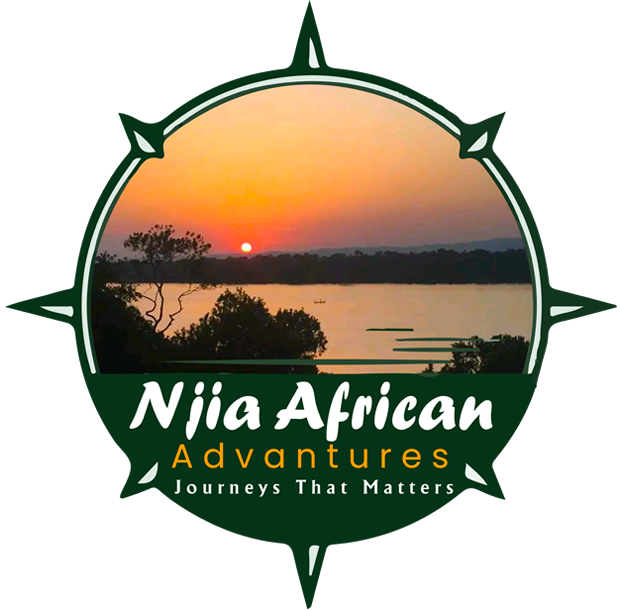- Home
- Safaris
- Uganda
- Gorilla Safaris
- 8-Days Budget Uganda Safari and Gorilla Sighting
- 14 Days Uganda Gorilla & Wildlife Safari
- 12 Days Uganda Primates, Gorilla trekking & Wildlife Safari
- Uganda Gorilla Safari & Kibale Chimps – 8 Days (Mid Range Offer)
- 10 Days Uganda Wildlife Safari, Gorilla & Chimpanzee Trekking
- 10 Days Uganda Big 5 Chimps & Gorilla
- 10 Day Luxury Big 5, Chimps & Gorillas
- 7 Days Wilderness & Gorilla Safari
- 6-Day Budget Adventure: Queen, Lake Mburo & Gorilla Tour
- 6 Days Gorilla Trekking & Queen Elizabeth Safari
- 4 Days Luxury Gorilla Trekking & Lake Bunyonyi Safari
- 3 Days Gorilla Trekking & Lake Bunyonyi
- 3 Days Uganda Gorilla Trekking Tour
- 3 Days Luxury Gorilla Trekking Safari
- Wildlife Safaris
- 30-Day Unforgettable Uganda Adventure
- 22 days Pearl of Africa safari
- 18 days Beauty of Uganda
- 15 Days Glorious Uganda Safari & Jinja Adventure
- 15 Days East African Safari Adventure
- 8-Days Budget Uganda Safari and Gorilla Sighting
- 13 Days Uganda Honeymoon Safari
- 10 Days Wildlife Safari and Yoga Adventure
- 9 Days Uganda Primate Trekking Safari
- 9 Days Kapchorwa, Pian Upe & Karamoja Adventure
- 8 Days Fly Kidepo & Murchison Wildlife Safari.
- 7 Days Uganda Safari
- 6 Days Uganda Wildlife Safari & Cultural Tour
- 6 Days BIG 5 Safari in Murchison Falls National Park
- 5 Days Kibale Chimpanzee Trekking & Queen Elizabeth Hot Air Balloon Safari
- Short Day Safaris
- 4 Days Kidepo Valley National Park
- 4 Days Chimpanzee Tracking Safari
- 4 Days Jinja Honeymoon Vacation
- 4-Day Murchison Combo: Rhino & Chimp Safari
- 3 days Luxury Big 5 Uganda Wildlife Safari
- 3 Days Murchison Falls National Park
- 3 Days Murchison Falls & Rhino Tracking Tour
- 3 Days Ssese Island Getaway Trip
- 3 Days Yoga Retreat Jinja
- 3 Days Jinja Getaway Trip
- 2 Days Jinja Adventure
- 2 Days Sipi Falls Tour
- 2 Days Ssese Islands Getaway
- 2 Days Lake Mburo Safari
- 1 Day Ziwa Rhino Sanctuary
- 1 Day Kampala Walking Tour
- Gorilla Safaris
- Kenya
- 15 Days East African Safari Adventure
- 14 Days Uganda Kenya Wildlife Safari
- 12 Days Kenya Adventure Safari
- 9 Day Luxury Big Kenya Safari
- 7 Days Kenya Safari Tours And Holidays
- 7 Days Masai Mara & Lake Nakuru Safari
- 6-Day Kenya Safari: Masai Mara, Nakuru & Amboseli
- 4 Days Fly-In Masai Mara Safari
- Masai-Mara African Safari
- 3 Days Safari To Amboseli National Park Kenya Tour
- Tanzania
- 8-Day Beach & Safari Zanzibar & Serengeti
- 15 Days East African Safari Adventure
- 15 Days East African Safari Adventure
- 8 Days Family Beach and Africa Safari Zanzibar & Serengeti
- 13 Day Uganda & Tanzania Safari Tour
- 11 Days Visit Tanzania & Zanzibar
- 10 Days Best African Tanzania Safari
- 10 Day Migration Serengeti Safari Tour
- 8 Days Best of Tanzania Safari & Zanzibar Beach Adventure
- 4 Days Tanzania Luxury Safari
- Rwanda
- 7 Days Classic Rwanda Wildlife Safari
- 14 Days Burundi and Rwanda Safari
- 10 Days Rwanda Primate Tracking Safari.
- 4 Days Uganda Gorilla and Wildlife Safari
- 5days Rwanda Gorilla Safari
- 8 Days Exploring Wildlife in Rwanda Tour
- 19 days Rwanda, Uganda and Burundi Safari
- 12 Days Volcano Gorilla Trek & Wildlife Safari
- 7 Days Rwanda Gorilla & Chimpanzee Trekking Tour
- Zanzibar
- Congo
- South Sudan
- Uganda
- Sports Tours
- Uganda
- East Africa Rugby Tour -10 Days Kenya and Uganda
- Africa Rugby Tour – 10 Days Kenya & Uganda
- 8 Days Uganda Rugby Tour and Nile River Rafting
- Africa Women Rugby Tour 8 Days Uganda
- 6 Days Uganda Rugby Tour and Wildlife Safari
- 10 Days Uganda Rugby Tour and Wildlife Safari
- 6 Days Uganda Rugby Tour
- 4 Days Uganda Senior Club Rugby Tour
- 3 Days Lake Victoria Uganda Golf Tour
- 1 Day Uganda Golf Tour
- Kenya
- French
- Spanish
- Uganda
- Treks/Running Tours
- About Us
- Blogs
- Contact Us
